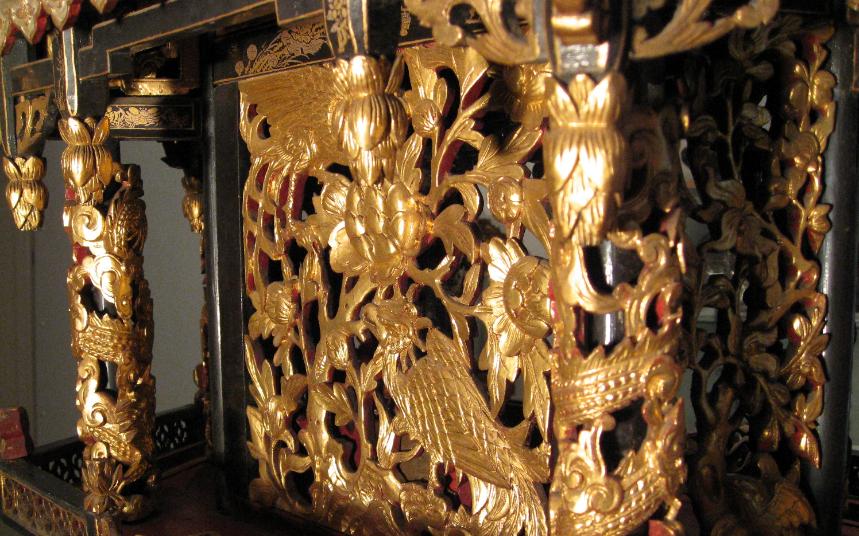
Large Shantou Teochiu Deity Carrier, China
Monumental Gilt & Lacquer Wooden Portable Taoist Shrine
Chaozhou/Shantou, China
late 19th century/early 20th century
height: 210cm, width: 145cm
This large and monumental portable deity shrine stands at more than two metres (6.8 feet) high. It comprises elaborately carved black, red and green lacquered and gilded wood tiers and panels with two niches for deities, all on six feet that rest on carved and gilded fo dogs. Towards the base are a set of two holes through which thick rails or poles could be slid to allow the structure to be hoisted and carried.
The shrine is made of relatively light pine wood and pulls apart into three separate units which aids with transport and storage.
Such a structure was used to transport the image of a major deity from its home temple to neighbouring temples to attend temple festivals or so that a major image of a deity could be carried around the local community during major temple celebrations. Such carriers were used in temples from Taiwan to north China, and among the Chinese communities of Southeast Asia.
The decoration of this carrier suggests that it was carved in Chaozhou (Teochew) or in nearby Shantou (Swatow). Keith Stevens, author of
Chinese Gods: The Unseen World of Spirits and Demons, has suggested in personal communications in relation to this carrier that as well as having been carved in either of these two places, another though less probable possibility is Southeast Asia and most particularly Singapore, where local Chaozhou/Teochiu carvers or local carvers who imitated the style worked. Certainly, the carving and gilding is comparable to that of the chanabs used to hold papaya offerings on household shrines, much favoured by the Straits Chinese or babas and nonyas of Penang, Singapore, Malacca and also the localised Chinese of Makassar in Indonesia. The chanabs almost certainly were imported from Chaozhou and Shantou.
Stevens believes that it is most likely that this carrier was carved for a large community temple, probably for a Teochew or Swatow community, either locally in eastern Guangdong, or in Taiwan or Southeast Asia. It would have been commissioned at considerable expense by the temple committee of a powerful and wealthy community. Quite possibly, the proceeds might have come from immigrant Chinese, who having made their fortunes in Southeast Asia or perhaps the US, returned to their native towns or villages, usually along the south China littoral, where they donated a considerable portion of their wealth to the deity or deities to whom they attributed their success.
The calligraphic panels indeed suggest a connection with travel, the sea and perhaps with seafaring and fishing.
The wording on the small title board over the upper cavity translates as ‘Mother of Buddha’.
The title board suspended over the lower, larger cavity translates as ‘Marine country – benevolent voyage’.
The long calligraphic board suspended down the right translates directly as ‘Benevolent light shine upon the calm sea waves’.
The board suspended down the left reads ‘Sacred virtue – great satisfaction, citizen and things prosper’.
Guangdong generally and the Chaozhou area specifically produced thousands of migrants who left China for Southeast Asia and elsewhere in the nineteenth century. There are also many fishing villages in the area. Additionally, an occupational-dialect linkage of the Teochiu who settled in Southeast Asia tended to be international commodities trade, particularly in rice and seafood. (The vast majority of rice traded around Southeast Asia was handled by local Teochiu trading families for example.) The sea theme also is continued in the carving which shows abundant sealife including fishes and well rendered lobsters.
Stevens says that the temples that would have commissioned such a carrier primarily would have been Taoist/Daoist, less so Buddhist, or for that matter, small village folk religion temples with their amalgamation of deities taken from any of the Chinese pantheons. A panel in the base shows two men mounted on mythical animals (flanking the carving of a large temple incense burner) and this is typical of both Daoist and folk religion carving. The graphic carvings in the main panel in the centre, again of a Daoist mythical animal; the dragons climbing the pillars, and the lions under the red ball beneath the legs of the base section are all Daoist, though says Stevens, such iconographic detail can also be seen in most village folk religion temples.
This item is in remarkably good condition given its intricacy, age and size. The item is stable. There are no repairs. There are minor losses to the carving here and there, but any such losses tend to disappear into the overall profusion. The gilding is also particularly crisp.
Provenance
Scottish art market.
References
Ho, W.M., Straits Chinese Furniture: A Collector’s Guide, Times Books International, 1994; and Stevens. K., Chinese Gods: The Unseen World of Spirits and Demons, Collins & Brown, 1997.
Inventory no.: 1015
SOLD


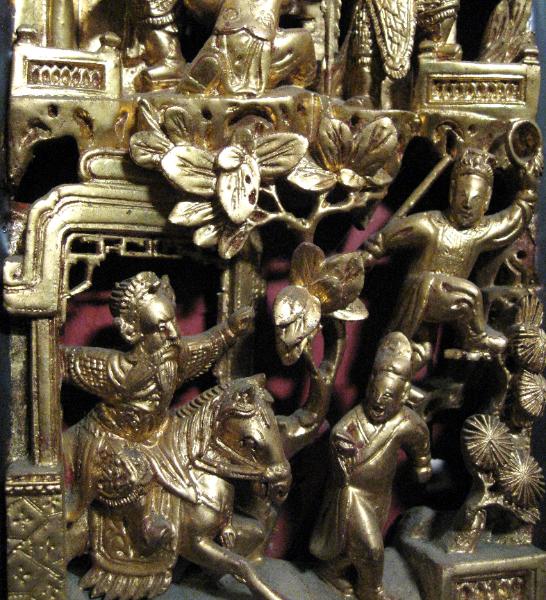
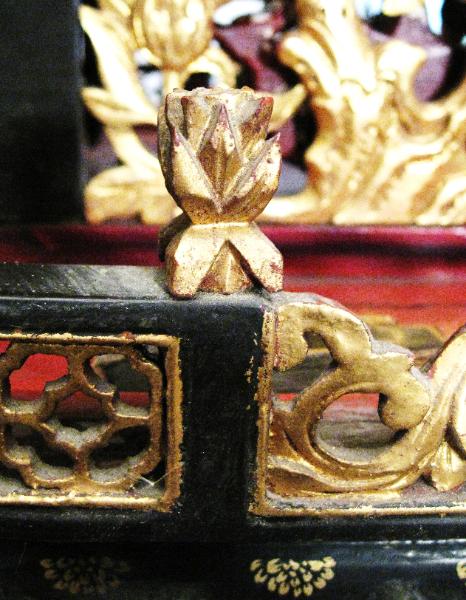
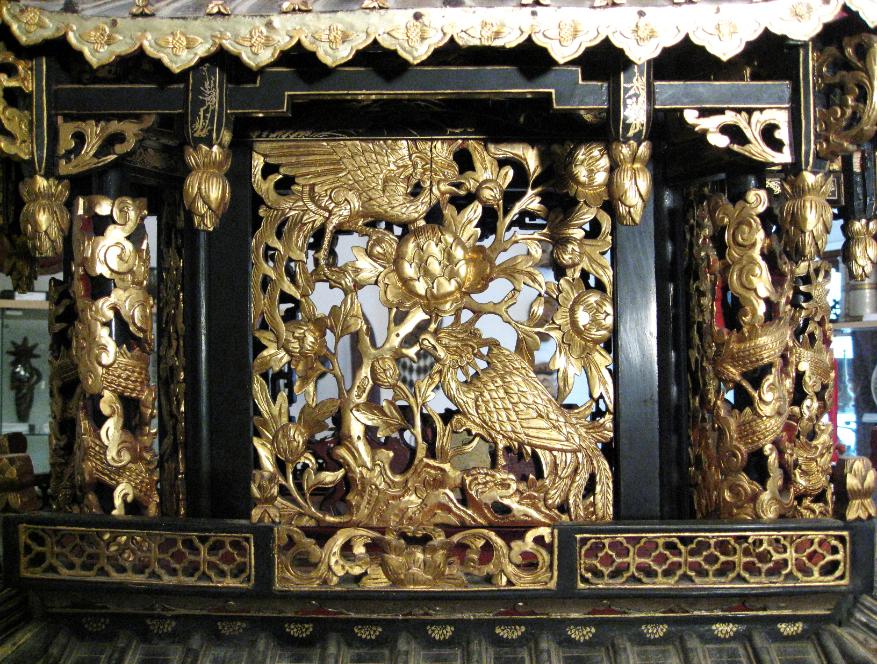
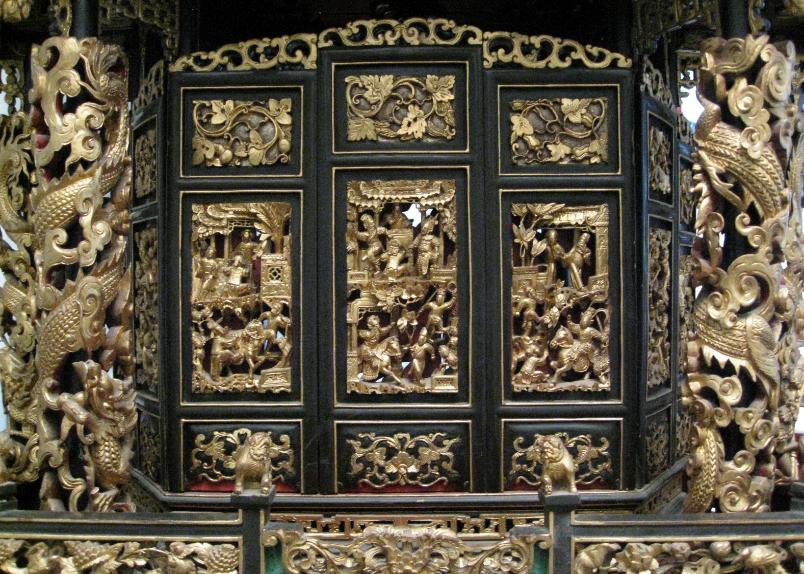
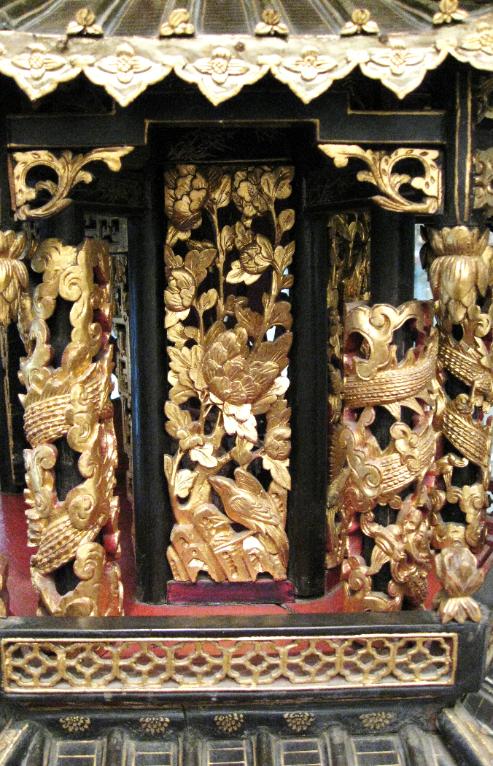
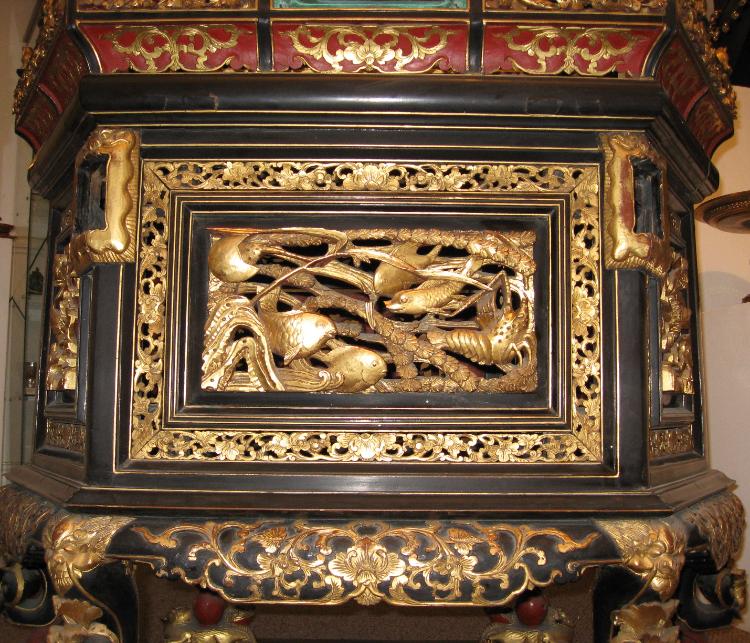

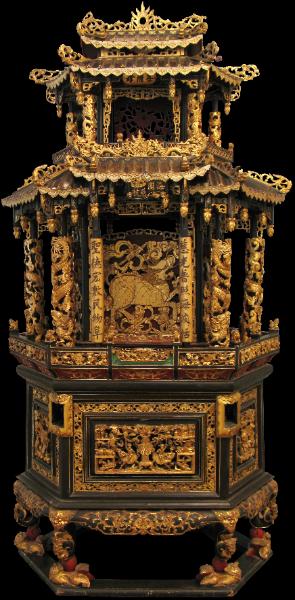
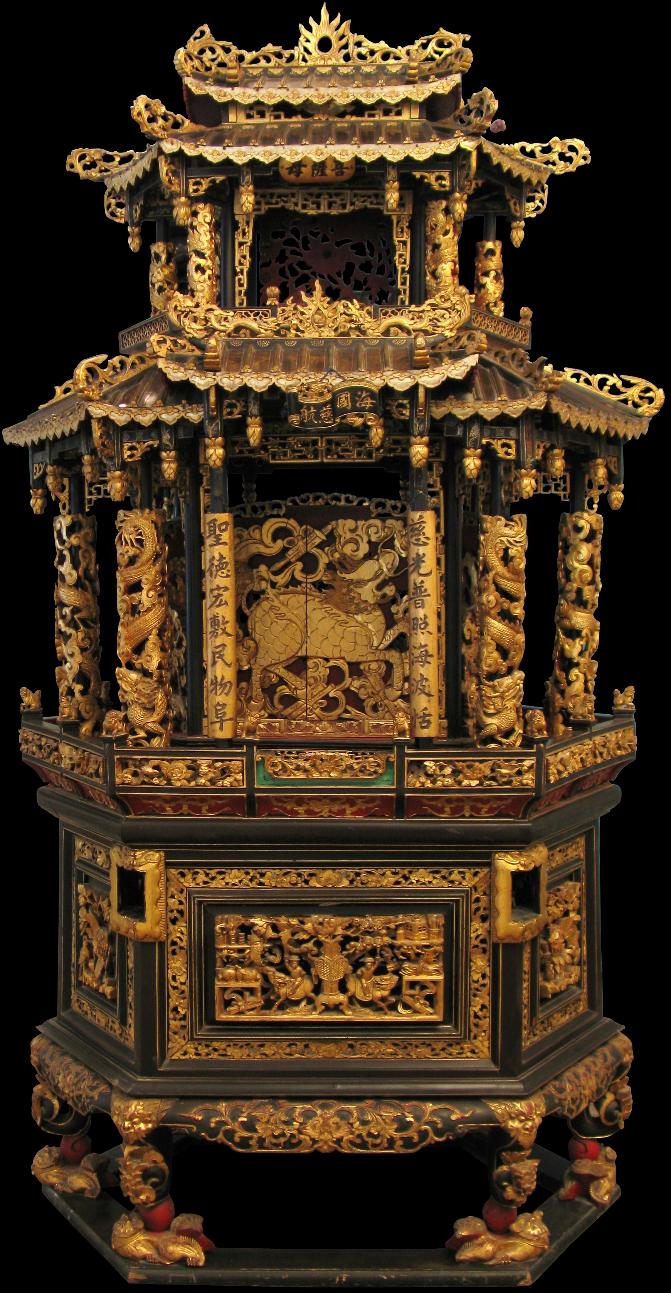
This clip provides a better idea of the relative size of this item.

